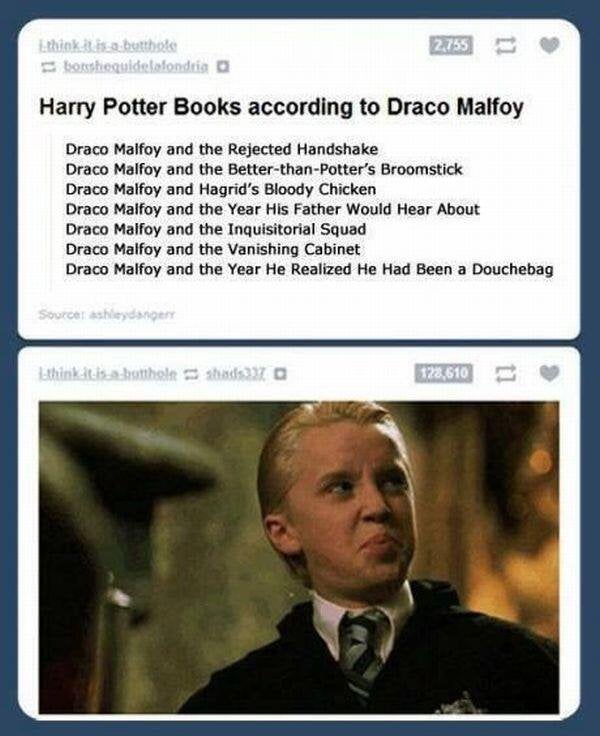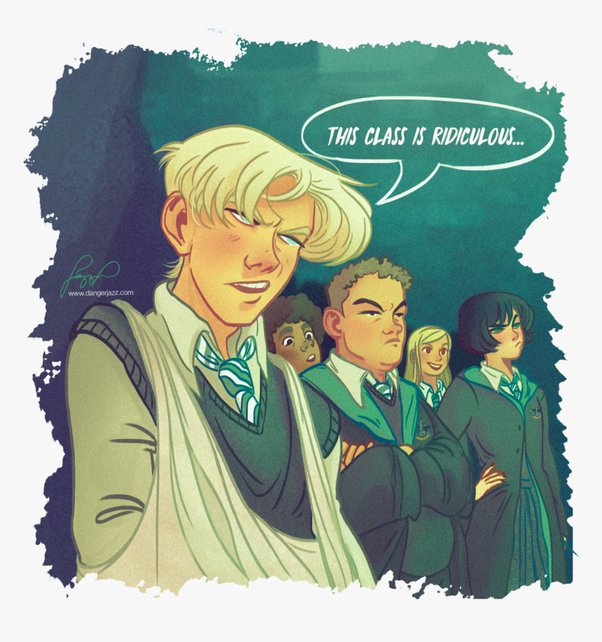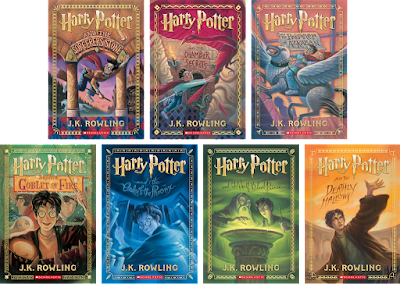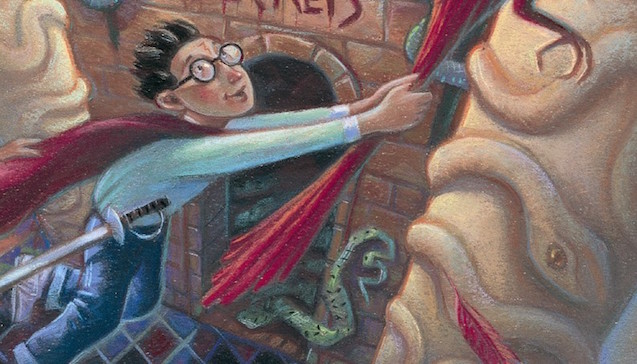The Harry Potter Books: The Evolution Of Draco Malfoy’s Character
Step into the enchanting world of Harry Potter, where magic and adventure await at every turn. Among the many captivating characters in J.K. Rowling’s beloved series, one that has captured the hearts of fans around the globe is Draco Malfoy. In this article, we will delve into the fascinating evolution of Draco Malfoy’s character throughout the Harry Potter books, tracing his journey from arrogant antagonist to complex and multi-dimensional individual.
Draco Malfoy, the quintessential Slytherin, starts off as the embodiment of pure-blood supremacy and the arch-nemesis of Harry Potter. With his silver-blond hair, piercing gray eyes, and an air of entitlement, Draco is the perfect foil to our brave and courageous hero. However, as the story progresses, we witness the layers beneath his facade being peeled away, revealing a character grappling with internal conflicts and external pressures. From his encounters with the Dark Lord to his struggles with loyalty and morality, Draco Malfoy’s character arc is a compelling exploration of the complexities of human nature.
In the following paragraphs, we will embark on a spellbinding journey through the Harry Potter books, uncovering the pivotal moments that shape Draco Malfoy’s character and witnessing his transformation from a one-dimensional antagonist to a nuanced and empathetic individual. Get ready to delve into the captivating world of magic, friendship, and self-discovery as we explore the evolution of Draco Malfoy’s character in the acclaimed Harry Potter series.
Draco Malfoy, one of the most memorable characters in the Harry Potter books, undergoes a fascinating evolution throughout the series. Initially portrayed as Harry’s arrogant and bullying rival, Draco’s character gradually reveals deeper complexities and vulnerabilities. As the story progresses, we witness his struggles with loyalty, peer pressure, and the weight of his family’s dark legacy. With each book, Draco’s actions and choices become more nuanced, ultimately leading to a surprising redemption in the face of adversity. The Harry Potter books offer a captivating exploration of Draco Malfoy’s character development.

The Harry Potter Books: The Evolution of Draco Malfoy’s Character
Draco Malfoy, a character from J.K. Rowling’s beloved Harry Potter series, undergoes a remarkable transformation throughout the course of the books. Known initially as Harry’s primary antagonist at Hogwarts School of Witchcraft and Wizardry, Draco’s character evolves and develops in unexpected ways. In this article, we will explore the fascinating evolution of Draco Malfoy’s character and the impact it has on the overall narrative of the Harry Potter books.
The Early Years at Hogwarts
In the early books of the series, Draco Malfoy is portrayed as a malicious and arrogant young wizard. He embodies the traits of a stereotypical school bully, constantly belittling and mocking Harry and his friends. Draco’s upbringing in a pure-blood wizarding family, known for their pureblood supremacy, influences his behavior and attitudes towards those he perceives as inferior. His interactions with Harry and his loyalty to the dark wizard, Lord Voldemort, set him up as one of the series’ primary antagonists.
As the books progress, however, glimpses of vulnerability and internal conflict begin to surface within Draco’s character. In “Harry Potter and the Chamber of Secrets,” we witness his fear and desperation when he is forced to carry out Voldemort’s orders. This moment hints at a deeper complexity to Draco, suggesting that there may be more to his character than meets the eye.
The Turning Point: The Half-Blood Prince
“The Half-Blood Prince” marks a significant turning point in Draco’s character development. We see him burdened with a secret mission assigned to him by Voldemort himself. Draco is tasked with assassinating Albus Dumbledore, the headmaster of Hogwarts. This pivotal moment forces Draco to confront the harsh realities of his choices and the weight of his allegiance to Voldemort.
The internal struggle Draco faces throughout “The Half-Blood Prince” humanizes his character and challenges the readers’ perceptions of him as a one-dimensional villain. We witness his vulnerability and fear as the pressure to complete his mission takes its toll on his mental and emotional well-being. This shift in perspective invites readers to empathize with Draco, despite his previous antagonistic actions.
The Redemption and Growth
In the final book, “Harry Potter and the Deathly Hallows,” Draco’s character arc reaches its climax. As Voldemort’s power intensifies, Draco’s family is drawn further into his clutches. However, Draco’s loyalty is tested when he hesitates to identify Harry during a crucial encounter. This moment of hesitation and his eventual refusal to hand Harry over to Voldemort demonstrates a significant turning point in Draco’s character.
Driven by a desire to protect his family, Draco’s actions become more nuanced, and he begins to question the beliefs he once held dear. His growth is further exemplified during the Battle of Hogwarts, where he ultimately chooses to abandon Voldemort and side with Harry and his allies.
The Aftermath and Redemption
After the fall of Voldemort, Draco faces the consequences of his actions. The epilogue of the series reveals that Draco has married and started a family, distancing himself from the dark wizarding world that once consumed him. This final glimpse of Draco’s character showcases his redemption and growth, as he moves away from the prejudices and hatred that defined him in his youth.
In conclusion, Draco Malfoy’s character in the Harry Potter books undergoes a remarkable evolution throughout the series. From his early years as Harry’s antagonist to his redemption and growth, Draco’s transformation adds depth and complexity to the narrative. J.K. Rowling masterfully crafts a character who challenges our initial perceptions and teaches us about the power of empathy and personal growth. The evolution of Draco Malfoy’s character serves as a testament to the transformative nature of the Harry Potter series as a whole.
The Evolution of Draco Malfoy’s Character
- Draco Malfoy starts off as a bully and antagonist to Harry Potter.
- As the series progresses, Draco’s character becomes more complex and conflicted.
- Draco’s loyalty to his family is tested, leading to inner turmoil.
- He starts to show moments of vulnerability and doubt, questioning his beliefs.
- By the end of the series, Draco demonstrates growth and redemption.
Frequently Asked Questions
1. How does Draco Malfoy’s character evolve throughout the Harry Potter books?
Draco Malfoy, one of the most iconic characters in the Harry Potter series, undergoes a significant evolution throughout the books. Initially introduced as Harry’s arrogant and prejudiced rival, Draco starts off as a bully and a supporter of Lord Voldemort. However, as the series progresses, we gradually see a shift in Draco’s character.
Draco’s evolution begins in the sixth book, “Harry Potter and the Half-Blood Prince,” where he is given the task to kill Dumbledore. This assignment forces him to confront the consequences of his actions and the true nature of his allegiance. Draco’s struggle with carrying out this task humanizes him and reveals the internal conflict he faces. By the end of the series, Draco ultimately makes a choice that goes against his family’s beliefs, showcasing his growth and redemption.
2. What events contribute to Draco Malfoy’s character development?
Draco Malfoy’s character development is influenced by several key events in the Harry Potter books. One significant event is when Draco is chosen as a Death Eater in “Harry Potter and the Goblet of Fire.” This marks a turning point for him as he becomes more deeply involved with Lord Voldemort and his followers.
Another crucial event is when Draco is given the task to kill Dumbledore in “Harry Potter and the Half-Blood Prince.” This assignment puts Draco in a position where he must confront his own beliefs and make a life-altering decision. The weight of this responsibility forces him to question his loyalty and ultimately leads to his character’s evolution.
3. How does Draco’s relationship with Harry change over time?
Draco Malfoy’s relationship with Harry Potter undergoes a significant transformation throughout the Harry Potter books. Initially, Draco views Harry as his primary rival and is constantly trying to outdo him. Their interactions are filled with animosity and disdain.
However, as the series progresses, Draco’s relationship with Harry becomes more complex. In “Harry Potter and the Half-Blood Prince,” they share a brief moment of understanding when Draco hesitates to curse Harry during a confrontation. This hints at a growing empathy between the two characters.
4. Does Draco Malfoy show any signs of redemption?
Yes, Draco Malfoy’s character shows signs of redemption in the later books of the Harry Potter series. While initially portrayed as a bully and a supporter of Voldemort, Draco’s experiences and internal conflicts lead to a change of heart. His hesitation to kill Dumbledore and his ultimate choice to protect Harry and his friends during the Battle of Hogwarts demonstrate his redemption.
Additionally, in the epilogue of “Harry Potter and the Deathly Hallows,” it is revealed that Draco and Harry have a somewhat civil relationship as adults, suggesting that Draco has moved past his prejudiced beliefs and grown as a person.
5. How does Draco Malfoy’s character contribute to the overall themes of the Harry Potter series?
Draco Malfoy’s character plays a significant role in highlighting the themes of redemption, forgiveness, and the complexity of human nature in the Harry Potter series. His evolution from a prejudiced bully to a conflicted individual showcases the potential for growth and change, even in characters who initially seem irredeemable.
Draco’s character also serves as a foil to Harry, emphasizing the importance of choices and the impact they have on shaping one’s identity. His struggle with his family’s beliefs and his eventual rejection of them reinforces the idea that individuals have the power to break free from societal expectations and forge their own paths.

The Story of Draco Malfoy Explained (+Malfoy Family Redemption)
Final Summary: The Transformation of Draco Malfoy in the Harry Potter Books
Throughout the Harry Potter series, we witness the remarkable evolution of Draco Malfoy’s character. From a snobbish and arrogant bully to a conflicted and ultimately redeemable individual, Draco’s journey captivates readers and teaches us valuable lessons about the complexities of human nature. This transformation not only adds depth to the story but also provides insights into the themes of redemption and the power of choices.
As we delve into Draco’s character development, we see the influence of his family’s beliefs and the pressure to conform to their ideals. However, as the series progresses, Draco begins to question his allegiances and grapples with the consequences of his actions. This internal struggle humanizes him and highlights the universal struggle between right and wrong. It reminds us that even those who seem irredeemable can find redemption if given the opportunity.
Furthermore, Draco’s evolution serves as a reminder that people are not simply defined by their initial impressions or actions. He teaches us that growth and change are possible, and that individuals have the capacity to learn from their mistakes. This resonates with readers on a personal level, as we too have experienced moments of growth and transformation throughout our own lives.
In conclusion, the evolution of Draco Malfoy’s character in the Harry Potter books is a testament to J.K. Rowling’s masterful storytelling and her ability to create complex and multifaceted characters. Draco’s journey from a prejudiced antagonist to a conflicted and ultimately redeemed individual offers valuable lessons about the power of choice, personal growth, and the potential for redemption. His story reminds us that even the most unlikely characters can undergo remarkable transformations, and that there is always hope for change and redemption.






